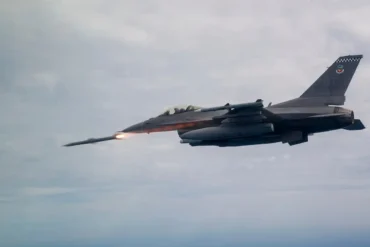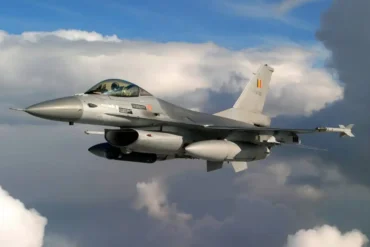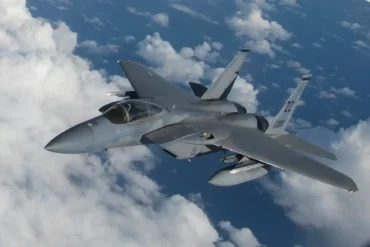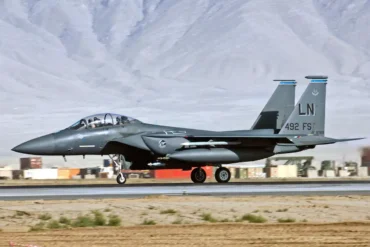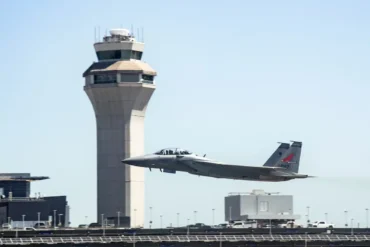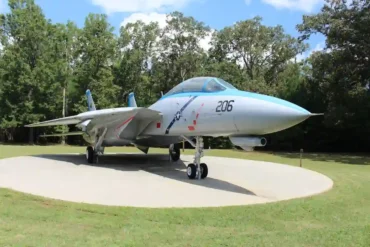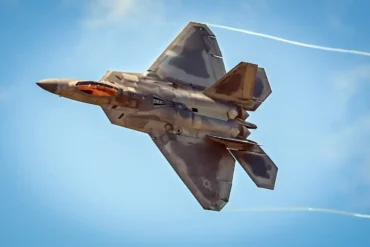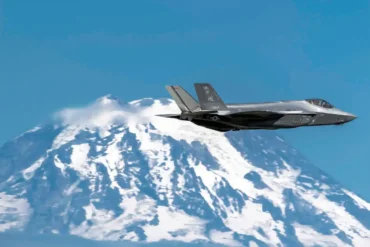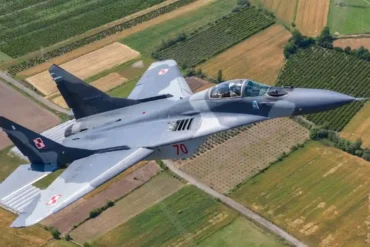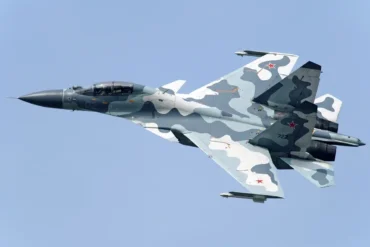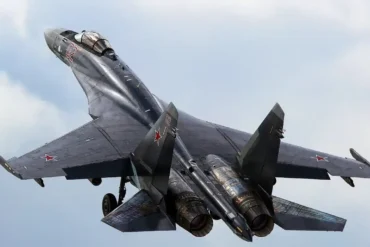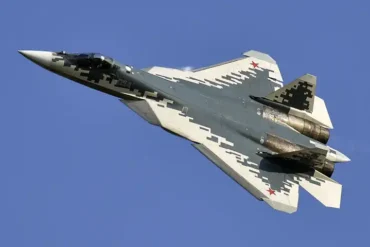The F-16 Fighting Falcon is one of the most iconic and versatile fighter jets in modern aviation history. Developed by General Dynamics (now Lockheed Martin), it has served in the air forces of over 25 countries. Known for its agility, speed, and advanced avionics, the F-16 is a multirole jet that can perform a variety of missions, from air superiority to ground attack.
In this article, we will explore the F-16 Fighting Falcon’s top speed and delve into the jet’s other performance specifications, making sure to cover all the relevant details to fully understand its capabilities.
F-16 Fighting Falcon Top Speed: An Overview
The F-16 Fighting Falcon is equipped with cutting-edge technology and a powerful engine that allows it to reach impressive speeds. Its top speed varies depending on different flight conditions such as altitude and payload, but the aircraft is capable of reaching:
- Mach 2.05, which is approximately 1,176 knots or 1,353 mph (2,178 km/h) at 40,000 feet in a clean configuration (no external stores).
- At sea level, the F-16 can reach speeds up to Mach 1.2, approximately 800 knots or 921 mph (1,482 km/h).
Why Speed Matters for the F-16
The F-16’s speed is crucial for its performance in both combat and tactical missions. As a multirole fighter, it is designed to excel in various roles, including air-to-air combat, close air support, and air interdiction. Having a high top speed allows the F-16 to intercept hostile aircraft quickly, evade incoming threats, and engage targets with precision at high speeds.
In addition to speed, the aircraft is equipped with a high thrust-to-weight ratio and superior maneuverability, making it highly effective in dogfighting and quick-response scenarios.
Engine Power and Performance
The heart of the F-16 Fighting Falcon‘s speed lies in its engine. There are two primary engine options for different blocks of the aircraft:
- General Electric F110-GE-129 engine for the F-16C Block 50 and F-16C Block 52 variants.
- Dry thrust: 17,155 lbf (76.31 kN)
- Afterburner thrust: 29,500 lbf (131 kN)
- Pratt & Whitney F100-PW-229 engine for the F-16 Block 52 variant.
- Dry thrust: 17,800 lbf (79 kN)
- Afterburner thrust: 29,160 lbf (129.7 kN)
These engines give the F-16 a remarkable thrust-to-weight ratio, making it a nimble and fast aircraft in various operational environments.
Aerodynamics and Design
The F-16 Fighting Falcon is known for its aerodynamic design, which is integral to its speed and performance. Here are some key design features:
- Length: 49 feet 5 inches (15.06 meters)
- Wingspan: 32 feet 8 inches (9.96 meters)
- Height: 16 feet (4.9 meters)
- Wing Area: 300 square feet (28 m²)
These design parameters contribute to the F-16’s high-speed stability and superior maneuverability. Its delta wing design and advanced control surfaces allow for high-speed flight while maintaining control at lower speeds, a crucial aspect for air-to-ground operations.
The Role of the Afterburner in Top Speed
The afterburner is a key component that enables the F-16 to achieve its high-speed capabilities. When engaged, the afterburner injects additional fuel into the exhaust, which significantly increases the thrust produced by the engine, thereby boosting the F-16’s speed. This is especially useful during combat missions, where rapid acceleration and high-speed interception are necessary.
However, it is important to note that the afterburner comes with a trade-off—while it boosts speed, it also results in higher fuel consumption. As a result, pilots generally use the afterburner selectively to maximize performance when necessary.
F-16 Fighting Falcon Performance Specifications
Max Takeoff Weight and Fuel Capacity
To understand the F-16’s performance, it’s important to consider the jet’s weight and fuel capacity, both of which affect its top speed and operational range. The F-16 has a:
- Max takeoff weight: 42,300 pounds (19,187 kg)
- Fuel capacity: 7,000 pounds (3,200 kg) of internal fuel.
This gives the F-16 a high payload capacity while still allowing for excellent speed and maneuverability. The aircraft can carry a wide range of weapons and fuel tanks, making it adaptable to different mission profiles.
Service Ceiling and G-Limits
Another crucial factor in the F-16’s performance is its service ceiling and g-limit. The service ceiling refers to the highest altitude the aircraft can reach, while the g-limit defines the maximum number of gravitational forces the aircraft can safely withstand.
- Service Ceiling: 50,000 feet (15,000 meters)
- g-limits: +9 g (the aircraft can withstand up to 9 times the force of gravity)
This combination of high altitude capability and high g-limit allows the F-16 to excel in high-speed maneuvering and interception at altitudes where other aircraft might struggle to operate effectively.
Roll Rate and Agility
The F-16 Fighting Falcon is also renowned for its agility. With a roll rate of 324°/s, the jet can quickly change direction, making it highly effective in dogfights and aerial combat. The F-16’s agility is enhanced by its fly-by-wire system, which allows for precise control and quick response times.
Fuel Efficiency and Range
While speed is essential, fuel efficiency is also a critical consideration for fighter jets. The F-16 Fighting Falcon has impressive operational ranges for both combat and ferry missions:
- Combat range: 295 nautical miles (339 miles, 546 km) on a hi-lo-hi mission with 4 × 1,000 lb (454 kg) bombs.
- Ferry range: 2,277 nautical miles (2,620 miles, 4,217 km) with three drop tanks.
These ranges allow the F-16 to perform extended missions while maintaining high speeds and operational flexibility.
Multirole Versatility and Payload Capacity
The F-16 Fighting Falcon is known for its multirole capabilities, making it one of the most versatile aircraft in the world. In addition to its impressive speed and agility, the F-16 can carry a wide array of weapons, including air-to-air missiles, air-to-ground bombs, and precision-guided munitions. This versatility allows the jet to perform a broad range of missions, from air superiority to ground attack and reconnaissance.
Weapons and Payload
The F-16 can carry a variety of external stores, including:
- Missiles: AIM-120 AMRAAM, AIM-9 Sidewinder, and others.
- Bombs: Precision-guided munitions (PGMs), such as the GBU-12 Paveway II laser-guided bomb.
- Fuel Tanks: External fuel tanks for extended range.
This ability to carry a diverse payload further enhances the F-16’s operational flexibility, allowing it to perform in a wide range of combat situations, whether engaging air threats or conducting ground strikes.
Conclusion: The F-16 Fighting Falcon’s Remarkable Performance
The F-16 Fighting Falcon is an exceptional fighter jet that has proven its capabilities in numerous combat scenarios worldwide. Its top speed, which reaches Mach 2.05 (1,176 knots or 1,353 mph at 40,000 feet), along with its agility, combat range, and multirole capabilities, make it a formidable aircraft in both air-to-air and air-to-ground operations. With a combination of cutting-edge technology, powerful engines, and superior aerodynamics, the F-16 continues to be a dominant force in modern military aviation.

